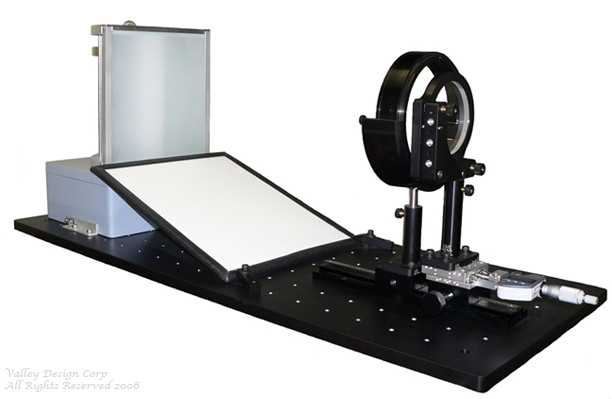
Measuring flatness using an optical flat entails direct contact between the specimen to be measured and the optical flat itself. Holding the surface of a high precision optical flat against the test specimen under monochromatic light creates visible light bands, which are formed by the air gaps where the two surfaces are not in perfect contact. These interference fringes show the contour of the surface under test. The light and dark patterns visually represent the flatness of the surface being tested, and it is the curve and spacing between these fringes which indicate the surface accuracy.
Patented, our new non-contact interferometer, the Indars Interferometer, is designed to alleviate the problems inherent with using optical flats or Fizeau interferometers as discussed above. The Indars Interferometer has been specifically optimized for the flatness characterization of thin, transparent wafers, substrates and windows. Its unique design allows wafers to be positioned vertically, eliminating most bending forces applied by gravity and without necessitating the application of flatness distorting films.

Please call or e-mail for further details.